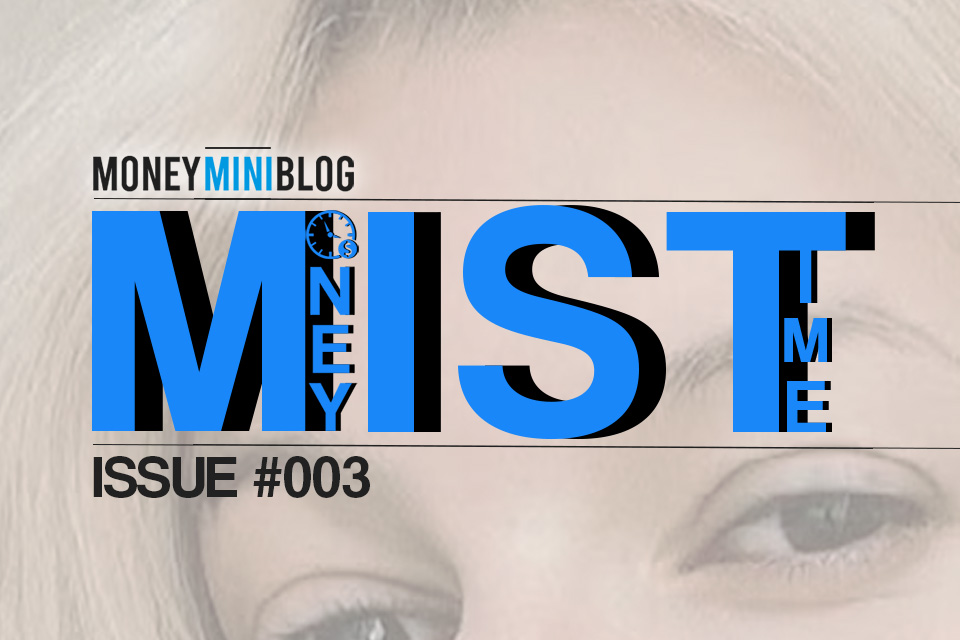The original Ford Model T used over 100 square feet of wood, and with millions of cars built, that meant mountains of scrap and sawdust.
Henry Ford, always looking for opportunity, turned the waste into charcoal—sparking the creation of Kingsford Charcoal, which still dominates the barbecue market 110 years later with an 80% share.
Hat tip to Morgan Housel for this story.
THE GREEN ROOM.
MONEY THOUGHT
Money isn't just what you spend — it's what you agree to carry.
Every purchase you make isn't just a transaction; it's a weight.
- Buy a big house, and you're agreeing to carry maintenance, property taxes, and repairs for decades.
- Buy a new car, and you're agreeing to carry insurance, depreciation, and the quiet stress of keeping it shiny.
Even smaller purchases — that new subscription, those “fun” impulse gadgets — add tiny weights you drag with you.
If you ever feel overwhelmed financially, it might not be that you're not earning enough — it's that you've agreed to carry too much.
The fastest way to feel richer is to start dropping the things you never wanted to carry in the first place.
TICKER TALK
Alphabet Inc. (GOOG), a.k.a. Google, just crossed the $3 trillion mark, joining Microsoft and Apple in the $3 trillion club. Nvidia is still alone in the $4 trillion club, but Microsoft isn't far behind.
So, is it too late to see any real benefit from Google?
I don't think so. Alphabet Inc. is growing in almost every sector, and as they've shown by hitting $3 trillion, they're not slowing down.
They tend to “eliminate” competition (e.g., buying Waze to eliminate navigation competition in the East). They're like what Walmart was in the 80s and 90s. And they're really good at it.
The first website people can think of is Google, and YouTube is likely in their top 3. Both of which Alphabet owns.
Their recent acquisitions are diving into AI — a sector the company is keeping up with well.
It's definitely not too late. It's a great time to buy Alphabet and hold it maybe forever… or at least a really long time.
Disclosure: Kalen personally owns shares of GOOG and plans to be a long-term holder. As always, this isn't financial advice — just sharing what we're watching. This is not a solicitation to buy. Consult a financial advisor before making any investment decisions.
@media only screen and ( max-width: 767px ) {.et_bloom .et_bloom_optin_21 .zigzag_edge.et_bloom_form_right .et_bloom_form_content:before, .et_bloom .et_bloom_optin_21 .zigzag_edge.et_bloom_form_left .et_bloom_form_content:before { background: linear-gradient(45deg, transparent 33.33%, #2c94f2 33.333%, #2c94f2 66.66%, transparent 66.66%), linear-gradient(-45deg, transparent 33.33%, #2c94f2 33.33%, #2c94f2 66.66%, transparent 66.66%) !important; background-size: 20px 40px !important; } }.et_bloom .et_bloom_optin_21 .et_bloom_form_container .et_bloom_form_header { background-color: #edf8ff !important; } .et_bloom .et_bloom_optin_21 .et_bloom_form_content button { background-color: #ffffff !important; } .et_bloom .et_bloom_optin_21 .et_bloom_form_content .et_bloom_fields i { color: #ffffff !important; } .et_bloom .et_bloom_optin_21 .et_bloom_form_content .et_bloom_custom_field_radio i:before { background: #ffffff !important; } .et_bloom .et_bloom_optin_21 .et_bloom_border_solid { border-color: #1062ad !important } .et_bloom .et_bloom_optin_21 .et_bloom_form_content button { background-color: #ffffff !important; } .et_bloom .et_bloom_optin_21 .et_bloom_form_container h2, .et_bloom .et_bloom_optin_21 .et_bloom_form_container h2 span, .et_bloom .et_bloom_optin_21 .et_bloom_form_container h2 strong { font-family: “Open Sans”, Helvetica, Arial, Lucida, sans-serif; }.et_bloom .et_bloom_optin_21 .et_bloom_form_container p, .et_bloom .et_bloom_optin_21 .et_bloom_form_container p span, .et_bloom .et_bloom_optin_21 .et_bloom_form_container p strong, .et_bloom .et_bloom_optin_21 .et_bloom_form_container form input, .et_bloom .et_bloom_optin_21 .et_bloom_form_container form button span { font-family: “Open Sans”, Helvetica, Arial, Lucida, sans-serif; }
Subscribers Only (Subscribe for Free!)
You have to subscribe to Money is Time (MIST) to get the weekly stock we're watching and the single-sentence summaries of valuable articles. If you want to start seeing these in your inbox (and a day earlier than on the site), enter your email below.
You have Successfully Subscribed!
TIME HACK.
THREE MAKES FREE
Here's one you don't hear often:
Stop trying to “finish” your to-do list—design it to be unfinishable.
The truth is, high-achievers almost never run out of things to do.
New tasks will always replace the ones you cross off, and the illusion that you'll one day “catch up” is what drives so much stress.
Instead, create a Today's Top 3 list each morning: three non-negotiables that, if done, make the day a success no matter what else happens.
Everything else goes into a “Later” list that you don't measure yourself against.
This shifts your brain from chasing an impossible finish line to celebrating meaningful daily wins.
You'll still move forward on big projects, but without the constant guilt of “not getting everything done”—because you've redefined what done actually means.
FROM THE BLOG.
MUST-READS
A No-BS, Non-Sponsored Look at Investing in Pacaso
An unbiased, non-paid look at Pacaso's co-ownership platform, how it differs from traditional timeshares, and if it's a solid investment.
Read More
17 Smart Money Habits Parents Can Teach Their Kids Early
Learn how to teach kids about money management through simple, intentional lessons for financial responsibility.
Read More
DEEP DIVE
How to Start a Self-Service Car Wash: The Complete Guide
How to Design Your Day Around Your Chronotype (Night Owl vs. Early Bird)
What Is a Choice-Minimal Lifestyle?
CAREER CONSIDERATION
Do You Want to Be a Restaurant Manager?
ONE-LINERS.
5 ARTICLES : 5 SENTENCES
1
President Trump signed an Executive Order expanding 401(k) investment choices by directing the Department of Labor and SEC to ease restrictions on alternative assets such as private equity, real estate, and digital assets, aiming to improve diversification, returns, and retirement security for over 90 million Americans, while delivering on his broader promises of tax cuts, deregulation, and making the U.S. a global leader in crypto and wealth-building. [The White House]
2
Sudden wealth rarely lasts because without the discipline of earning and managing money over time (and the maturity that's built with it), people—like many lottery winners—tend to squander it, proving that financial stability comes less from windfalls and more from slowly built habits and long-term effort. [Of Dollars and Data]
3
Skillcations—trips built around learning or improving hobbies like falconry, sailing, photography, cooking, or writing—are rising in popularity because they combine travel with brain-boosting benefits, flow states, and childlike creativity, offering travelers of all ages both memorable experiences and long-term mental health gains. [Thrillist]
4
New regulations under the Trump administration and an FHFA directive exploring crypto as mortgage collateral are pushing cryptocurrency into the U.S. housing market, with firms like Milo and Figure already offering crypto-backed loans, raising both excitement about expanded access to homeownership and concerns about volatility, financial stability, and whether this shift benefits average buyers or mainly wealthy crypto holders. [Sherwood]
5
Vitaliy Katsenelson reflects on an unexpected, politics-free conversation with Charlie Kirk that revealed his genuine curiosity and commitment to free speech, contrasting Vitaliy's Soviet upbringing where dissent was dangerous with America's shrinking space for disagreement, and ultimately honoring Charlie's courage as a reminder that democracy depends on open dialogue, humility, and the bravery to speak uncomfortable truths. [The Intellectual Investor]
@media only screen and ( max-width: 767px ) {.et_bloom .et_bloom_optin_21 .zigzag_edge.et_bloom_form_right .et_bloom_form_content:before, .et_bloom .et_bloom_optin_21 .zigzag_edge.et_bloom_form_left .et_bloom_form_content:before { background: linear-gradient(45deg, transparent 33.33%, #2c94f2 33.333%, #2c94f2 66.66%, transparent 66.66%), linear-gradient(-45deg, transparent 33.33%, #2c94f2 33.33%, #2c94f2 66.66%, transparent 66.66%) !important; background-size: 20px 40px !important; } }.et_bloom .et_bloom_optin_21 .et_bloom_form_container .et_bloom_form_header { background-color: #edf8ff !important; } .et_bloom .et_bloom_optin_21 .et_bloom_form_content button { background-color: #ffffff !important; } .et_bloom .et_bloom_optin_21 .et_bloom_form_content .et_bloom_fields i { color: #ffffff !important; } .et_bloom .et_bloom_optin_21 .et_bloom_form_content .et_bloom_custom_field_radio i:before { background: #ffffff !important; } .et_bloom .et_bloom_optin_21 .et_bloom_border_solid { border-color: #1062ad !important } .et_bloom .et_bloom_optin_21 .et_bloom_form_content button { background-color: #ffffff !important; } .et_bloom .et_bloom_optin_21 .et_bloom_form_container h2, .et_bloom .et_bloom_optin_21 .et_bloom_form_container h2 span, .et_bloom .et_bloom_optin_21 .et_bloom_form_container h2 strong { font-family: “Open Sans”, Helvetica, Arial, Lucida, sans-serif; }.et_bloom .et_bloom_optin_21 .et_bloom_form_container p, .et_bloom .et_bloom_optin_21 .et_bloom_form_container p span, .et_bloom .et_bloom_optin_21 .et_bloom_form_container p strong, .et_bloom .et_bloom_optin_21 .et_bloom_form_container form input, .et_bloom .et_bloom_optin_21 .et_bloom_form_container form button span { font-family: “Open Sans”, Helvetica, Arial, Lucida, sans-serif; }
Subscribers Only (Subscribe for Free!)
You have to subscribe to Money is Time (MIST) to get the weekly stock we're watching and the single-sentence summaries of valuable articles. If you want to start seeing these in your inbox (and a day earlier than on the site), enter your email below.
You have Successfully Subscribed!
WORTH THE READ.
So good you need to read every word:
- Building Financial Resiliency [Fintech Takes: Workweek]
- The 80-Hour Myth (Why We're Addicted To Being Busy) [Dan Koe]
- Bitcoin Explained in 2 Minutes [X]
P.S.
Nobody deserves what happened to Charlie Kirk, especially his wife and kids, who were watching the event. Politics aside, if you are celebrating his death, please don't subscribe or unsubscribe.
The post MIST #3 – Pacaso's $3 private stock: Unbiased take before the window shuts in 2 days appeared first on MoneyMiniBlog.
![Best ESIM For Taiwan [2026 GUIDE]](https://rjema.com/wp-content/uploads/2025/11/Best-ESIM-For-Taiwan-2026-GUIDE-95x95.jpg)
![Best ESIM For Taiwan [2026 GUIDE]](https://rjema.com/wp-content/uploads/2025/11/Best-ESIM-For-Taiwan-2026-GUIDE-527x297.jpg)

















